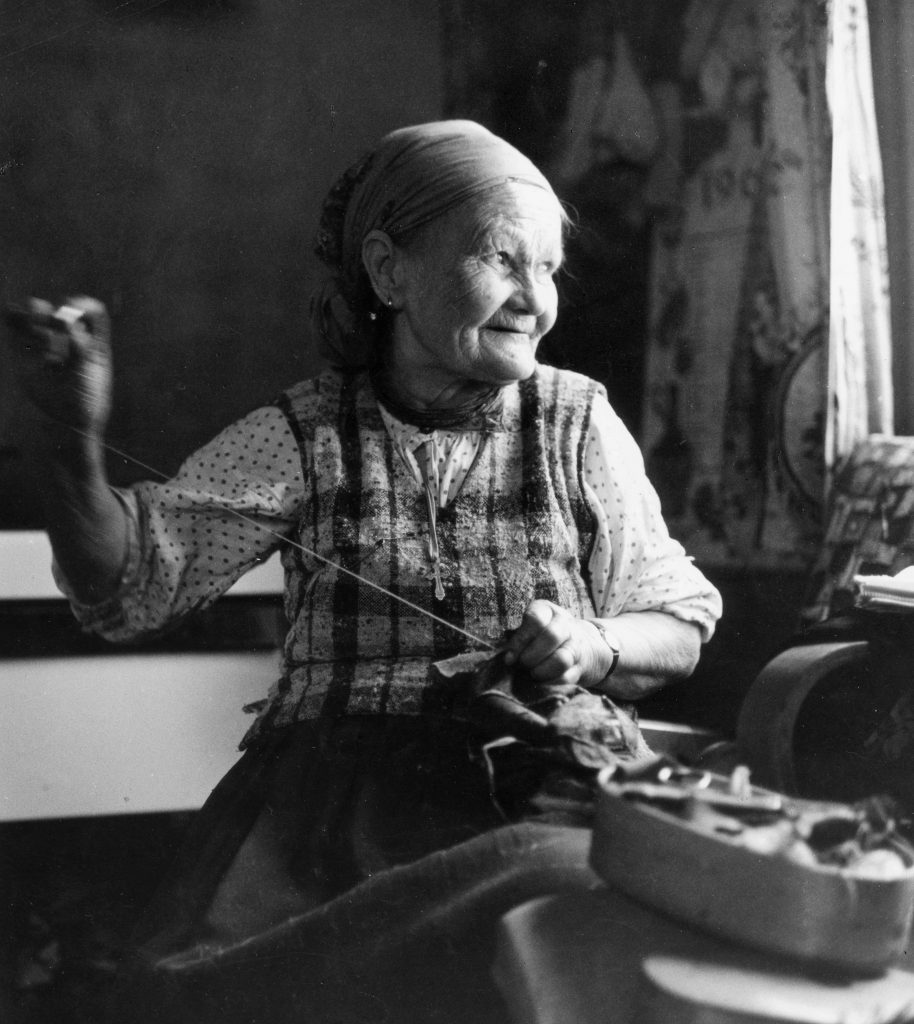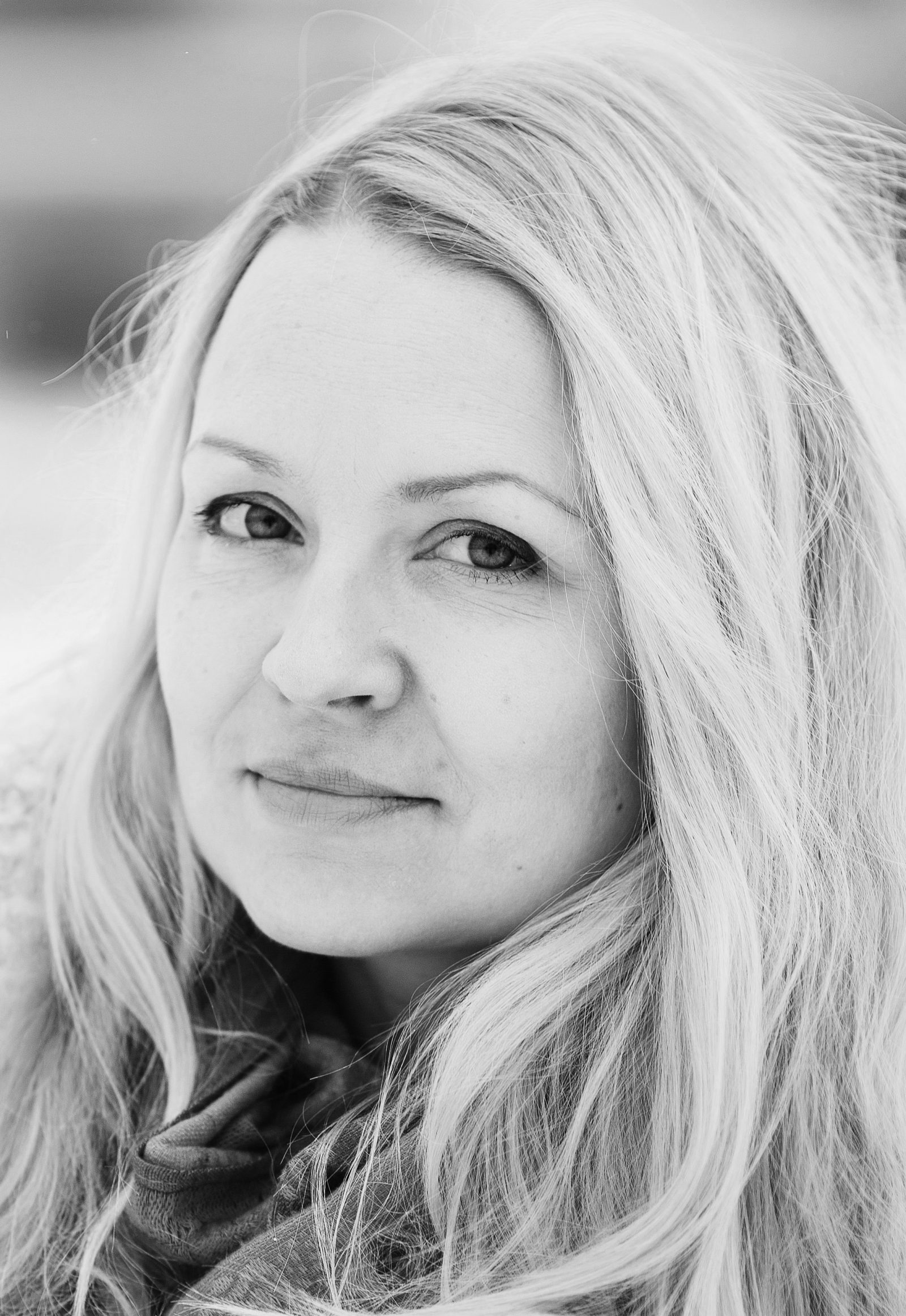Katja Gauriloff answers my phone call in Rovaniemi, where she’s preparing to depart for the Sodankylä film festival, the seminal film event of the Finnish summer. Gauriloff, who studied cinema in Tampere and lived in Helsinki for many years, now lives in Lapland, dividing her time between Rovaniemi and Utsjoki. Skolt Sámi from her mother’s side, Gauriloff does not speak Skolt, nor did she grow up in Sápmi, the Sámi country – yet her Sámi identity is strong and many of her works deal with her ancestry and the history of the Sámi community.
My question is whether the return home has had an effect on the director’s work. “Often distance helps us see better. In a way, being an outsider has been helpful for me, because it has given me the courage to do things I wouldn’t necessarily have been able to do from within the community,” Katja says, adding, “ But there’s two sides to this. My first film, A Shout into the Wind, was born out of my looking at the community from my point of view – me looking at the Sámi community as an outsider. The community, however, saw me as a member, which made the film possible in the first place. Making my second film Kaisa’s Enchanted Forest only deepened my sense of belonging to the Sámi community.”
“Often distance helps us see better. In a way, being an outsider has been helpful for me, because it has given me the courage to do things I wouldn’t necessarily have been able to do from within the community”
Kaisa’s Enchanted Forest is a study of the filmmaker’s great-grandmother, the Skolt Sámi storyteller Kaisa Gauriloff and her friendship with the Swiss author Robert Crottet. In 1938 Crottet, inspired by his dreams, travelled to Lapland, to the Suenjeli Skolt village, where he met Kaisa Gauriloff. The two soon became friends, and Crottet started to take down the stories and legends that Kaisa related. Kaisa’s Enchanted Forest is based on Crottet’s writings, photographs and cine films. The film will be shown at the Institut Finlandais as part of this fall’s film program.

Kaisa’s and Robert’s story intertwines with the great upheaval of the Skolt Sámi life during World War II. As a result of the war, the Skolts lost almost everything: they were forced to leave their ancestral homeland and the entire people found itself on the brink of destruction. Robert Crottet became a voice for the Skolts in the post-war world. His goal was to safeguard the Skolt way of life and future. He not only donated the proceeds from his books to the Skolt cause, but also created a foundation through which he raised large sums of money in Europe to aid the Skolt people. “I always knew it was a great topic – the history of the Skolt Sámi is important, but forgotten. At the same time I didn’t want to take it up right away: I had to make other films first to get more experience. Crottet’s materials gave me an excellent point of view for the film, because I didn’t want to make it too personal, just about my life or my family,” Katja explains the process.
“I always knew it was a great topic – the history of the Skolt Sámi is important, but forgotten. At the same time I didn’t want to take it up right away: I had to make other films first to get more experience.”
For Katja, Robert was a mythical figure, familiar from the stories and photo albums of her childhood. “Of course I have always been interested in using my great-grandmother’s story in a film, but I hadn’t found the right form for it.” The director had the idea of trying to track down the original materials. It was going to be a difficult task. “I began the detective work to find Crottet’s documentary materials, calling around archives and private individuals.” After many twists and turns a mysterious address in Spain turned up. Katja sent a postcard to the address. Soon the production company received a reply, signed by Enrique Mendez, Crottet’s life partner. “He invited me to Spain where I found all the original materials. There were tons of them! Enrique gave it all to me, asking me to make a film based on it.” Katja returned to Finland, made a successful movie, and donated the materials to the Sámi museum Siida.
Kaisa’s Enchanted Forest was awarded the prize for the best documentary at the Finnish Jussi film awards in 2016. The following year it won the Grand Prix at the Northern Character film festival in Murmansk. I poke around asking about the reception of the film’s treatment of politically sensitive subjects. “I’ve met many people in central Europe who have known either Robert or Kaisa. At the Toronto Film Festival, an elderly lady with a walker was sitting in the front row. After the screening she got up and started talking, first in English, then in broken Finnish, about how her husband had travelled with Crottet. There’s been so many of these kinds of serendipitous meetings and stories; they’ve been amazing.” In Finland, however, the encounters have been different, sometimes even difficult. “People have been telling me straight up, ‘thank you for telling this story’. But often there have been feelings of shame because of ignorance. I agree that someone should feel shame about ignorance of the history of the Sámi, but not the spectators. Why is it that in Finland there’s nothing about the Sámi or our history in schoolbooks? It’s high time to change that.”

Gauriloff moves smoothly between different genres and universes in her films. Baby Jane, a full-length fiction film was released this spring. “Baby Jane has been a wonderful project! In addition to camera work, one of the things I love the best is working with actors. My style does not follow the traditional documentary style – for example Kaisa’s Enchanted Forest has many fictional elements in it.” Presently Gauriloff is enjoying a three-year artist grant and is working on a fiction screenplay for a full-length movie together with the Sámi writer, musician and activist Nillas Holmberg. “It has always been important for me to challenge myself and not to make the same film twice. I’ve always been pushing my own limits and the limits of my practice as a film maker.”
“The Sámi identity of the new generation that is emerging now is strong enough so that they can move forward with the themes. An example of this is Sámi feminism.”
We end our conversation on the topic of the situation of Sámi cinema and Sámi filmmakers in Finland in general. “Cinema – or art in general – is a perfect way to talk about history and to fix the generational rift, which has been especially important in my work,” Katja says. Questions of history and identity became central in Sámi cinema in the beginning of the 2000s, during the pivotal years of Sámi filmmaking. “Fortunately we have moved on from these themes. The Sámi identity of the new generation that is emerging now is strong enough so that they can move forward with the themes. An example of this is Sámi feminism.” Katja hopes, however, that the time of categorizations will soon be over.
“I would love us to be in a situation where we could treat any subject we want. Where we wouldn’t have to treat Sámi related topics in a way that interests the Finnish majority. I am of course against all labels; the fact that I am a Sámi filmmaker does not mean I have to always treat Sámi topics in my work. I have always worked on exactly what interests me and what I feel like working on.”
Kaisa’s Enchanted Forest, a film by Katja Gauriloff will be projected at Institut finlandais on the 14th November 2019 as part of the IF Screenings.
